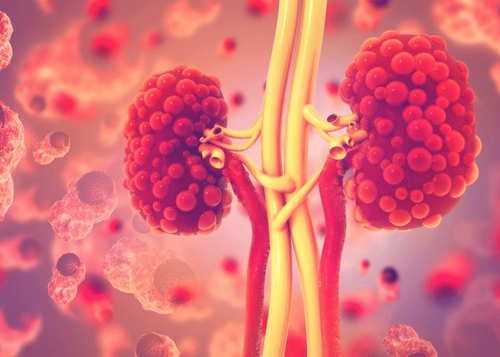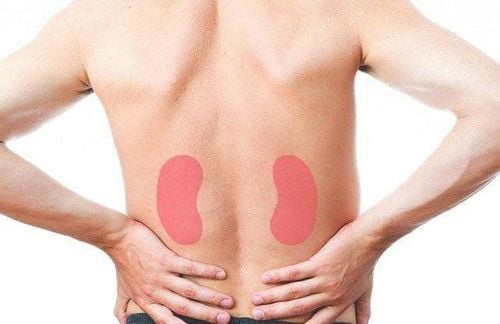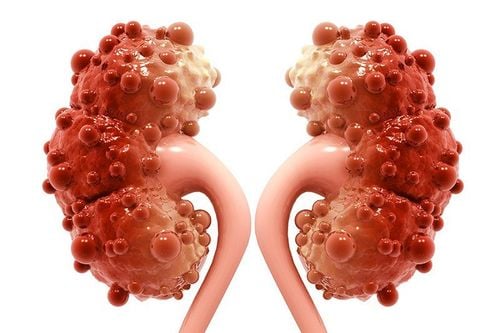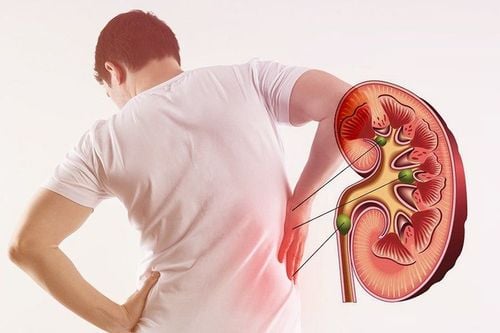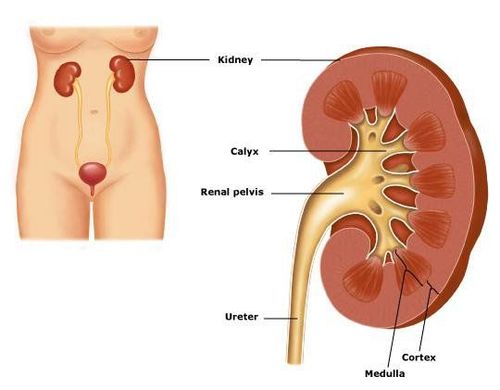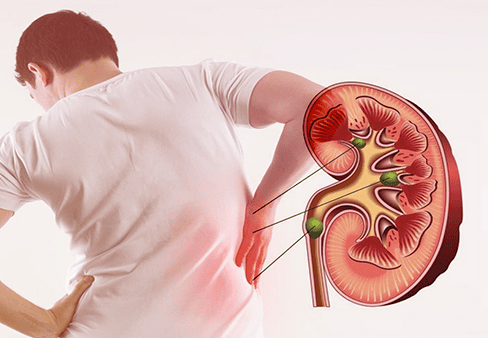This is an automatically translated article.
Simple renal cyst, also known as single kidney cyst, is a benign pathology. This is the second most common pathology in the group of cystic kidney disease. The kidney is the site of origin and development of simple renal cysts.
1. What is a simple renal cyst?
An abnormal mass of fluid in the kidney is called a simple renal cyst (single kidney cyst). Single kidney cysts can occur in one or both kidneys. Renal cysts have clear fluid, do not communicate with the renal calyx and are usually round. Unlike the cysts in polycystic kidney disease, the cause of monocystic kidney disease is a genetic disorder. Renal cysts alone do not cause decreased renal function, do not grow in the whole kidney, or replace the normal structure of the kidney. Single kidney cysts commonly occur in the elderly.
Up to 90% of people over 70 years old have a single kidney cyst, this rate reaches about 50% in people over 50 years old.
Renal cortex, renal medulla, renal parenchyma are areas where renal cysts may appear. Currently, the exact cause of single kidney cyst is unknown. Some studies suggest that structural damage to the renal tubules or lack of blood supply to the kidneys may be the cause of kidney cysts. Renal cysts can be formed when a diverticulum from the renal tubule separates. The role of genes in the formation and development of pure renal cysts has not been determined.
Renal cysts are simply benign cysts, do not cause cancer, do not lead to kidney failure or other complications.

Nang đơn thận thường xuất hiện ở người cao tuổi
2. Signs of simple renal cyst
Symptoms of simple renal cysts are often nonspecific. Many patients with a single kidney cyst show no signs of the disease. However, when the cyst is large enough, it can cause some of the following symptoms:
Low back pain Severe low back pain Infected cyst causing fever A mass can be palpable in the abdomen if the kidney cyst is too large Due to the appearance of a cyst Should have a bulging mass in the abdomen Hips and back pain or discomfort Bloody urine Frequent urination High blood pressure Some people have kidney cysts throughout their life without knowing they have the disease because the symptoms are quite poor and to a small extent.
Some complications of the disease may be encountered, such as:
Bleeding in the cyst Infected cyst Broken cyst Cancerized cyst

Nang đơn thận có ít dấu hiệu và ở mức độ nhẹ nên người bệnh khó phát hiện
3. Diagnosis of renal cysts alone
To diagnose simple cystic disease, the doctor will conduct a general assessment of the patient's condition.
Besides, the doctor will ask you to perform some tests to diagnose and treat the disease:
Perform diagnostic imaging tests: Ultrasound, computed tomography (CT) or magnetic resonance imaging ( MRI) to determine the shape, size, and nature of the cyst, and to help differentiate it from other kidney tumors. Blood or urine tests: To see if kidney function is impaired
4. Factors that increase the risk of simple kidney cysts
There are many factors that increase the risk of simple kidney cysts, such as the disease is more common in men and the elderly are the subjects with a high incidence although the disease can occur in all ages.
Currently, about 5% of the population has monocystic kidney disease, in which mainly men. Age is the main risk factor that increases the chance of getting the disease up to 25-33%. Minimizing your risk factors can help prevent cystic kidney disease alone
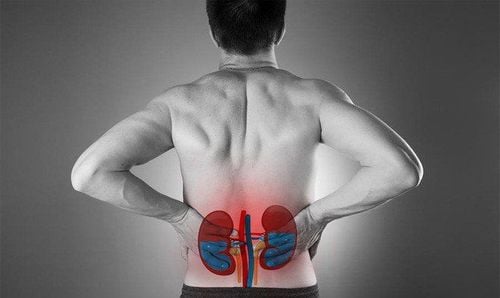
Nam giới có tỷ lệ mắc bệnh nang đơn thận cao hơn
5. Methods to treat kidney cysts alone
Your medical condition will determine the level of treatment. For mild cases, the doctor will remove the fluid from the cyst by performing a small procedure, and to avoid recurrence, alcohol-containing solutions will be pumped into the cyst. If in case the cyst recurs or enlarges, the doctor will remove all the fluid inside and simultaneously burn the cyst wall.
You may not need treatment if the cyst is not causing any symptoms or complications and the cyst is less than 3cm in size. However, patients should be periodically monitored for single kidney cysts with ultrasound, urine and kidney function tests periodically, to avoid strong collisions.
In the case of a single kidney cyst causing compression of the renal calyces and ureters, the size of the cyst is more than 6cm, it can be treated with sclerotherapy. Under the guidance of ultrasound, the renal cyst should be drained with a percutaneous needle, then an absolute amount of alcohol is injected to cause tissue fibrosis. Cysts located around the renal hilum, should not perform aspiration.
If the patient has a large kidney cyst, the doctor will prescribe surgery, usually using laparoscopic surgery to drain the kidney cyst or remove it.
In case the patient has complications
Bleeding: The patient should be lying down and can take hemostatic drugs if necessary. In addition, you need to drink enough water. If bleeding is heavy, blood transfusion can be performed Infection: Give the patient antibiotics at Vinmec International General Hospital with a system of modern medical facilities, equipment and a team of experts and doctors. With many years of experience in the examination and treatment of neurological diseases, patients can rest assured that they will be examined and treated at the Hospital.
To register for examination and treatment at Vinmec International General Hospital, you can contact Vinmec Health System nationwide, or register online HERE.




